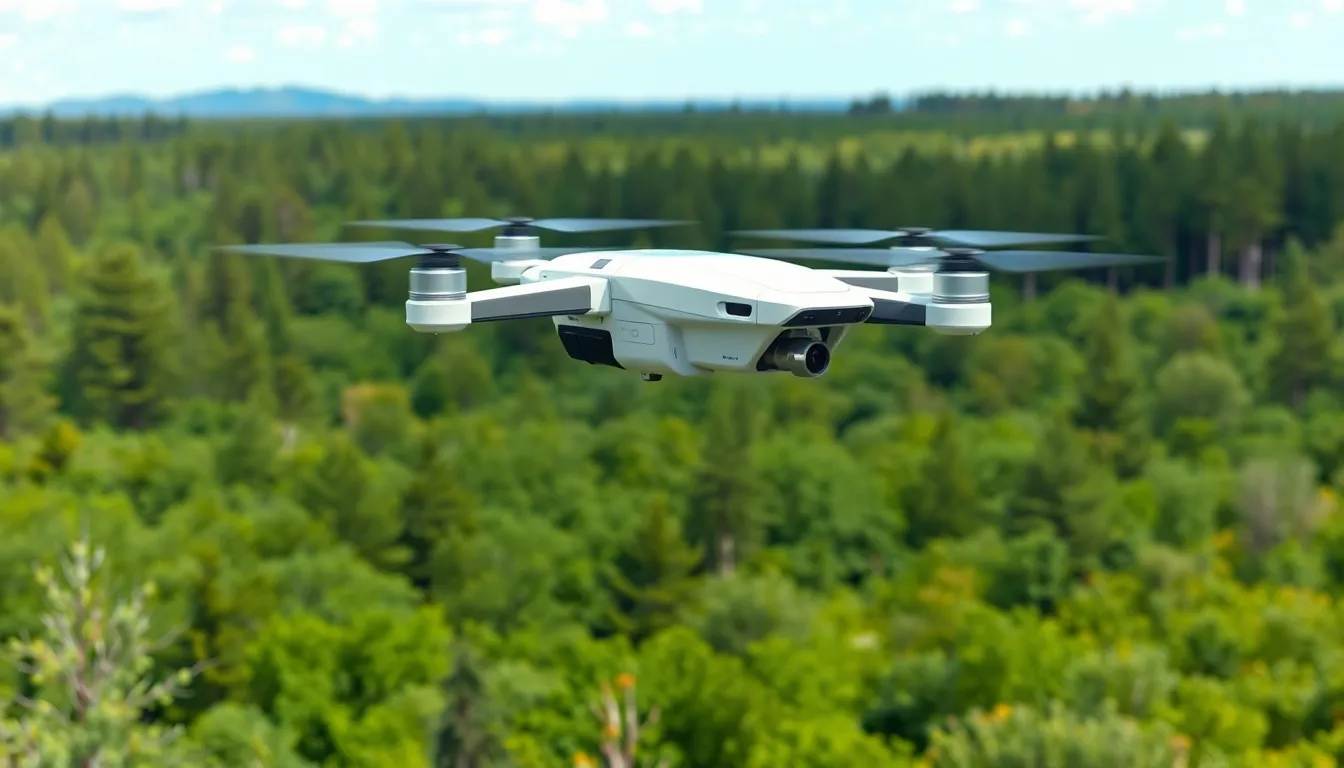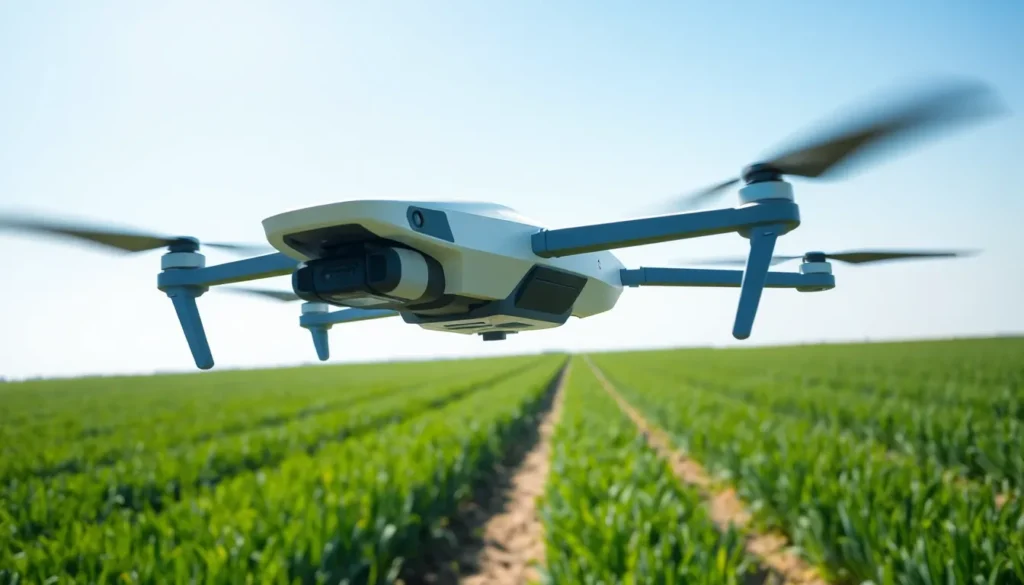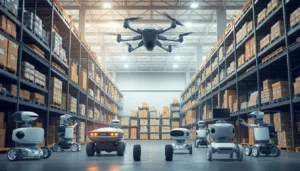Imagine a world where robots swoop in like superheroes, tackling tasks and saving the day without breaking a sweat. Welcome to the realm of flyby robotics, where innovation meets efficiency, and the future looks a whole lot brighter. These flying marvels aren’t just for sci-fi movies anymore; they’re transforming industries and redefining how we think about automation.
Table of Contents
ToggleOverview of Flyby Robotics
Flyby robotics refers to a class of autonomous flying machines designed for specific tasks across various sectors. These robots enhance efficiency through advanced technology integrations like AI, GPS, and real-time data processing. Industries such as agriculture, construction, and disaster management benefit significantly from their capabilities.
In agriculture, flyby robots perform crop monitoring and field mapping, allowing farmers to optimize resources. They can deliver precise information on crop health and irrigation needs, which leads to increased yields. Construction sites utilize these robots for aerial surveys and inspections, streamlining project management and safety assessments.
Disaster management efforts gain from the speed and accessibility of flyby robotics. Equipped with high-resolution cameras and sensors, they assess environments quickly and provide vital data to emergency responders. These flying robots can reach areas that may be hazardous for human teams.
The applications extend into logistics, where flyby robots facilitate last-mile deliveries. Using drones for quick parcel drop-offs reduces delivery times and operational costs. Industries that rely on fast-paced logistics find these solutions attractive due to their efficiency.
Innovation drives the evolution of flyby robotics. Ongoing research focuses on improving their capabilities and addressing challenges like battery life and payload capacity. As technology advances, the potential for these flying robots to revolutionize industries expands further.
Overall, flyby robotics represent a significant advancement in automation. By integrating sophisticated technology with real-world applications, they stand to reshape productivity standards across multiple fields.
Applications of Flyby Robotics

Flyby robotics are making significant contributions across various fields, showcasing their versatility and advanced technology.
Space Exploration
In space exploration, flyby robotics serve critical roles in missions. They gather data on planetary atmospheres, surface compositions, and potential resources. NASA utilizes these robots to perform close flybys of celestial bodies, capturing high-resolution images and conducting atmospheric analysis. Robots like the Mars Helicopter Ingenuity demonstrate how these autonomous machines can operate in extreme conditions, providing insights that ground-based teams cannot achieve. Their ability to maneuver and collect data enhances our understanding of the universe, paving the way for future human exploration.
Environmental Monitoring
Environmental monitoring benefits immensely from flyby robotics. These systems collect vital data on wildlife populations, vegetation health, and atmospheric conditions. Drones equipped with advanced sensors conduct aerial surveys, tracking changes in ecosystems over time. Researchers use this real-time information to assess climate change impacts and natural resource management. For instance, flyby robots assist in monitoring forest health and mapping deforestation, delivering precise data that supports sustainable practices. Their efficiency and accuracy revolutionize how environmental studies are conducted.
Advantages of Flyby Robotics
Flyby robotics offer significant advantages across different sectors, emphasizing efficiency and advanced data collection capabilities.
Efficiency and Cost-effectiveness
Incorporating flyby robotics reduces operational costs across industries. Companies save on labor and equipment expenses while increasing the speed of project completion. These robots perform tasks that traditionally require extensive manpower, such as aerial inspections in construction or monitoring crops in agriculture. With their ability to cover large areas in a short time, productivity levels rise dramatically. A report by PwC indicates that drone technology can cut costs by up to 30% in certain applications. Boosting efficiency results in time savings that can be redirected to other essential tasks. Ultimately, businesses realize a faster return on investment by leveraging these advanced flying machines.
Enhanced Data Collection
Flyby robotics excel at data collection, providing precise and comprehensive insights for various applications. Equipped with advanced sensors and imaging technology, they gather real-time data on agricultural fields, construction sites, and environmental conditions. Farmers use drones for crop analysis, leading to informed decisions about irrigation and fertilization. In disaster management, these robots relay critical information quickly, assisting responders in assessing damage and planning recovery efforts. Collecting data efficiently reduces the chances of human error, enabling better decision-making. Organizations benefit from accurate intelligence that supports operational strategies and enhances overall effectiveness in their respective fields.
Challenges Facing Flyby Robotics
Challenges impact the widespread adoption and functionality of flyby robotics. Two primary areas of concern include technical limitations and regulatory issues.
Technical Limitations
Technical limitations hinder the full potential of flyby robotics. Battery life often restricts flight duration, making it challenging to complete extensive tasks without recharging. Payload capacity can also be insufficient for larger equipment or data collection instruments, which limits applications in various industries. Furthermore, reliance on advanced technologies like AI requires robust software and hardware systems. These systems must operate effectively in diverse environments. Inconsistent connectivity can disrupt data transmission, affecting real-time analytics. Addressing these barriers will enhance the overall performance of flyby robotics.
Regulatory Issues
Regulatory issues pose significant challenges for the deployment of flyby robotics. Complex regulations often create hurdles in various jurisdictions, resulting in inconsistent operational guidelines. Both local and national authorities enforce strict rules around airspace usage, which complicates logistics operations. Additionally, privacy concerns make public acceptance difficult, with many fearing surveillance by aerial robots. Compliance with safety standards also adds another layer of complexity to testing and scaling the technology. These regulatory obstacles necessitate a comprehensive understanding and collaboration among stakeholders to foster innovation.
Future of Flyby Robotics
Advancements in flyby robotics promise to redefine industry standards. Ongoing research focuses on enhancing capabilities such as battery life and payload capacity. Innovations in artificial intelligence and machine learning facilitate improved navigation and decision-making processes. Users can expect more sophisticated systems that integrate seamlessly with existing infrastructure.
Numerous sectors stand to benefit from future developments. Agriculture may see smarter crop monitoring systems that provide real-time analytics to increase yields. In construction, automated site surveys promise greater precision and reduced project timelines. Emergency responders will rely on these robots for faster assessments during disaster management, potentially saving lives.
A clear trend indicates growing interest in the environmental sector. Flyby robotics will continue to play a critical role in climate research, offering detailed insights on wildlife and vegetation health. NASA’s commitment to employing these robots for space exploration illustrates the versatility of their applications.
Cost-effectiveness will remain a driving force in adopting flyby robotics. PwC reports indicate potential cost reductions of up to 30% in specific applications. Enhanced data collection capabilities through advanced sensors provide businesses with critical insights, facilitating informed decision-making.
Challenges persist in the realm of regulations and technical limitations. Complex legal frameworks hinder widespread adoption, requiring stakeholders to navigate compliance issues carefully. Robust systems capable of operating effectively in diverse environments will need development to overcome these hurdles.
Future iterations of flyby robotics command attention as they continue to adapt and evolve, heralding significant transformations across multiple industries.
Flyby robotics stand at the forefront of technological innovation with the potential to reshape multiple industries. Their ability to perform tasks efficiently and accurately offers a glimpse into a future where automation enhances productivity and decision-making. The ongoing advancements in AI and machine learning promise to further refine these systems, making them even more integral to sectors like agriculture, construction, and environmental monitoring.
While challenges such as regulatory hurdles and technical limitations persist, the commitment to overcoming these obstacles is evident. As flyby robotics continue to evolve they’ll not only improve operational efficiency but also contribute to sustainable practices. The journey ahead is filled with possibilities that could redefine industry standards and pave the way for smarter, more effective solutions across the globe.










